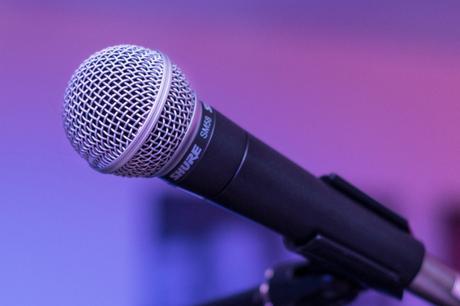
Being the master of ceremonies entails more than the talent of weaving words together, it also requires the skillful use of body language. For the most part, what you say won't matter too much if you don't make the right gestures or use the proper tone of voice or facial expression to match your message.
That said, you must first understand the importance of body language and how you can improve yours to become a successful professional on-stage MC.
Why Do You Need to Know About Body Language as an MC?
Body language is a nonverbal form of communication that covers a speaker's gestures, movements, and posture on stage during a talk. It also encompasses how the speaker appears before the crowd and, ultimately, plays a key role in the success of an emcee's presentation.
"What makes body language important?" you might ask. The answer lies in how well your audience receives your talk.
Just imagine, two people delivering the same speech to the same crowd. One is standing behind a podium and keeps his eyes down while reading the speech. The other is walking around and waving his hands while talking and making eye contact with the audience.
Who do you think will the crowd applaud to more? Your answer to this question reflects the gravity of the effect body language has on public speaking.
6 Tips in Using Body Language on Stage
Even if you don't have bad habits on stage, improving your body language will definitely boost your impact as a master of ceremonies. To achieve this, here are six tips you can follow to effectively use more than just your voice to engage your audience from the stage:
1. Manage Tension
In some instances, tension can help the presenter become more energetic during his speech. However, too much of it can cause nonverbal behavior that may negatively affect a presentation.
Manage your tension before going on stage by sitting or standing with your weight evenly distributed on both your left and right feet or bones. Then, direct your eyes right in front of you with your throat relaxed and chin to the floor.
Breathe deep breaths from your belly. As you inhale, count from one to six while clenching your fists to increase tension, then release it as you exhale to allow your arms, hands, and body to relax.
2. Maintain Eye Contact
In order to connect with your audience, you must keep eye contact to ensure that they know how much you're committed to what you're presenting to them. This will also boost your influence over the crowd.
Of course, it is humanly impossible to keep your eyes from leaving the crowd. To remedy this, you should switch from looking at a general direction where your audience are to connecting with specific groups or individuals among them. If you're able to catch them looking back, hold the eye contact for a brief moment before redirecting your eyes to others.
3. Use Appropriate Facial Expressions
Your face says a lot about the extent of your knowledge and how you feel about what you're saying. On top of that, the audience augments the meaning of the presentation based on how your face looks.
That said, you must always keep your facial expressions in check. Otherwise, you might be smiling or using a straight face at the wrong time. To remedy this, practice speaking in front of the mirror while paying particular attention to how your face looks as you deliver your message.
4. Show Emotion
Being emotional while presenting to a crowd not only allows you to connect to them but also helps make them "feel" what you're saying rather than just hear it. Aside from that, it also makes internalizing your speech easier, making it come out more convincingly and your body language more congruent with what you're feeling.
5. Exude Confidence, Especially During Your Entrance
Confidence is a critical factor in determining whether an emcee will succeed in driving the event in the direction he intends for it to go.
That said, your confidence can be reflected by your body language, so make sure that you walk out to the stage with your head held high, a good posture, and a steady, unwavering gait. Upon reaching the center of the stage, pause, smile, and raise your eyebrows while your eyes are wide open as if to regard your audience.
6. Don't Forgo Gestures
Depending on your topic, you can be as animated as possible. Like facial expressions, gestures matter a lot if you intend to use body language to speak to a crowd. Hand gestures, in particular, are great for underscoring the important points of the speech and emphasizing your conviction about what you're saying.
In the same manner, a lack of gestures indicates to your audience that you aren't invested in your presentation and have no emotional attachment to it.
Wow the Crowd With Body Language
Body language is a critical factor in the success of a presentation. To become a great master of ceremonies, you must take your time to practice using it to your advantage on stage. Who knows? You may even be able to initiate a change or influence people's decisions even without saying a word.
About the Author
Hisham Wyne is an internationally recognised MC, broadcaster, presenter and moderator who helps the world's best-known brands create memorable occasions. He regularly hosts conferences, panel sessions, gala dinners and award ceremonies for some of the world's best brands. With 150+ events under his belt, Hisham is the professional speaker that brands and agencies turn to when wanting to interview, engage and entertain government VVIPs and Hollywood celebrities.
